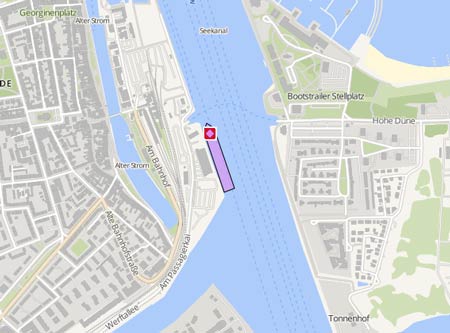PACIFIC HERON
Course/Position
3 hours ago
Latest ports
Latest Waypoints
Latest news
Ships prepare to return 331-kg plutonium stash from Japan to U.S.
A U.S. civic group said Friday two ships have arrived in Kobe to transport the massive plutonium stash Japan agreed in 2014 to return to the United States. The British-flagged ships will pick up the cargo in the village of Tokai, Ibaraki Prefecture, and take it during a 52-day voyage to the Savannah River Site, a U.S. government nuclear facility in South Carolina, according to Savannah River Site Watch. The Pacific Heron and the Pacific Egret, anchored in Kobe, will transport 331 kg of the highly toxic material, including weapons-grade versions, from the Fast Critical Assembly run by the Japan Atomic Energy Agency in Tokai. It will be the largest shipment of plutonium to be transported by sea since 1993, when Japan’s Akatsuki Maru carried 1 ton of the material from France to Japan, said Tom Clements, head of the civic group monitoring nuclear issues. It is believed that much plutonium is enough to make 50 nuclear bombs. The U.S. provided the plutonium, including some from Britain and France, to Japan for research during the Cold War. http://www.japantimes.co.jp/news/2016/03/06/national/ships-prepare-return-331-kg-plutonium-stash-japan-u-s/#.Vt6Qe_nNy9I
British ships’ en route to Japan to collect enough plutonium for 80 nuclear warheads?
Two British ‘ghost ships’ are reportedly on their way to Japan to collect enough plutonium for 80 nuclear warheads. It is believed that each ship is armed with 20mm cannon and guarded by 25 commandos. They are likely being shadowed by a Royal Navy submarine. The Pacific Heron and the Pacific Egret are currently en route to Japan after departing Barrow-in-Furness, England, in January. The vessels are to travel across the Atlantic before passing through the Panama Canal and into the Pacific, Mail Online reported. Once the ships arrive in Japan, they will pick up 331 kilograms of plutonium – enough to make 80 nuclear warheads. However, the ultimate destination is a US nuclear storage facility in South Carolina, to which the ships will set off after collecting their nuclear cargo in Japan. https://www.rt.com/uk/331776-british-ships-nuclear-plutonium/
Ships with nuclear cargo bound for Japan to pass south of Cape of Good Hope
A cargo of highly radioactive nuclear fuel left the French port of Cherbourg on April 17 on board the specialist British ships, PACIFIC HERON and PACIFIC EGRET. Both ships are being used to transport the nuclear fuel, according to a statement issued by the ships’ owners, Pacific Nuclear Transport Ltd (PNTL). It said that the two ships will travel via the Cape of Good Hope, across the Indian Ocean and presumably south of Australia and into the south-western Pacific and to arrive in Japanese waters in mid-June. More at http://ports.co.za/news/news_2013_04_26_01.php
Upload News

